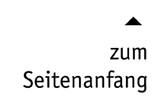
 + + 
Contents
Preface
more titles
in English language…
|
Cross-linguistic perspectives in sign language researchSelected papers from TISLR 2000
The papers in this volume are a selection of the presentations given at the seventh international conference on Theoretical Issues in Sign Language Research. This meeting, known as TISLR, was held for the first time in its history in Europe – in Amsterdam, The Netherlands, from July 22nd to July 27th, 2000. The topic chosen for the meeting and for this volume is cross-linguistic aspects of sign language research. This choice reflects the status quo in the sign linguistics field: The time is ripe for this topic since many more sign languages around the world are now being studied compared to 15 years ago when the first TISLR conference was held in Rochester (1986). It is now possible to make comparisons and work on typological issues. At the conference many different sign languages were discussed. In the 60 papers and 75 poster presentations in the course of the five days of the meeting there were data presented from 48 different sign languages.
The particular aim of the TISLR 2000 conference was to open up new linguistic perspectives and hopefully to stimulate collaborative work between different sign language groups for the future. The conference provided ample opportunity for researchers to discuss and there was also one room reserved for researchers to work with informants from different languages. This has already borne fruit. In the paper by Pyers (see table of contents) the author has been able to extend her exploration of the ASL sign THINK as a verb expressing false belief to other sign languages and determine that such a verb exists in these other languages, supporting her thesis that this fact has its origin in Deaf culture. Some papers start out with a comparison of different sign languages in order to determine if common principles are at work. Nyst & Baker for example compare the phonology of name signs across several languages. Johnston compares the lexicon of three historically related languages and one non-related language, and comes to the provoking conclusion that the lexicon of BSL, NZSL and Auslan does not provide evidence for considering them as different languages. By contrast, Hurlbut compares the lexicon of different dialects of Malaysian Sign Language, arriving at the conclusion that there are at least three different sign languages in Malaysia rather than one.
Aside from the explicitly comparative investigations, other papers focus on details of individual sign languages. The contributions have been organized in five different sections: general, lexicon and phonology, morphosyntax, pragmatics, and psycholinguistics (see table of contents). Papers on acquisition have been included in the appropriate section according to the aspect of acquisition they deal with. The two papers in the general section were given as invited addresses and are broader in their scope, addressing the field of sign linguistics as a whole: on the one hand the development of approaches within the field of sign linguistics (Woll) and on the other the role of the Deaf researcher (Ladd).
Baker, A., B. van den Bogaerde & O. Crasborn (eds): Cross-linguistic perspectives in sign language research. Selected papers from TISLR 2000. Paperback, with CD-ROM, 352 Seiten, Signum 2003, ISBN 3-927731-88-9. EUR 45,00.
|

